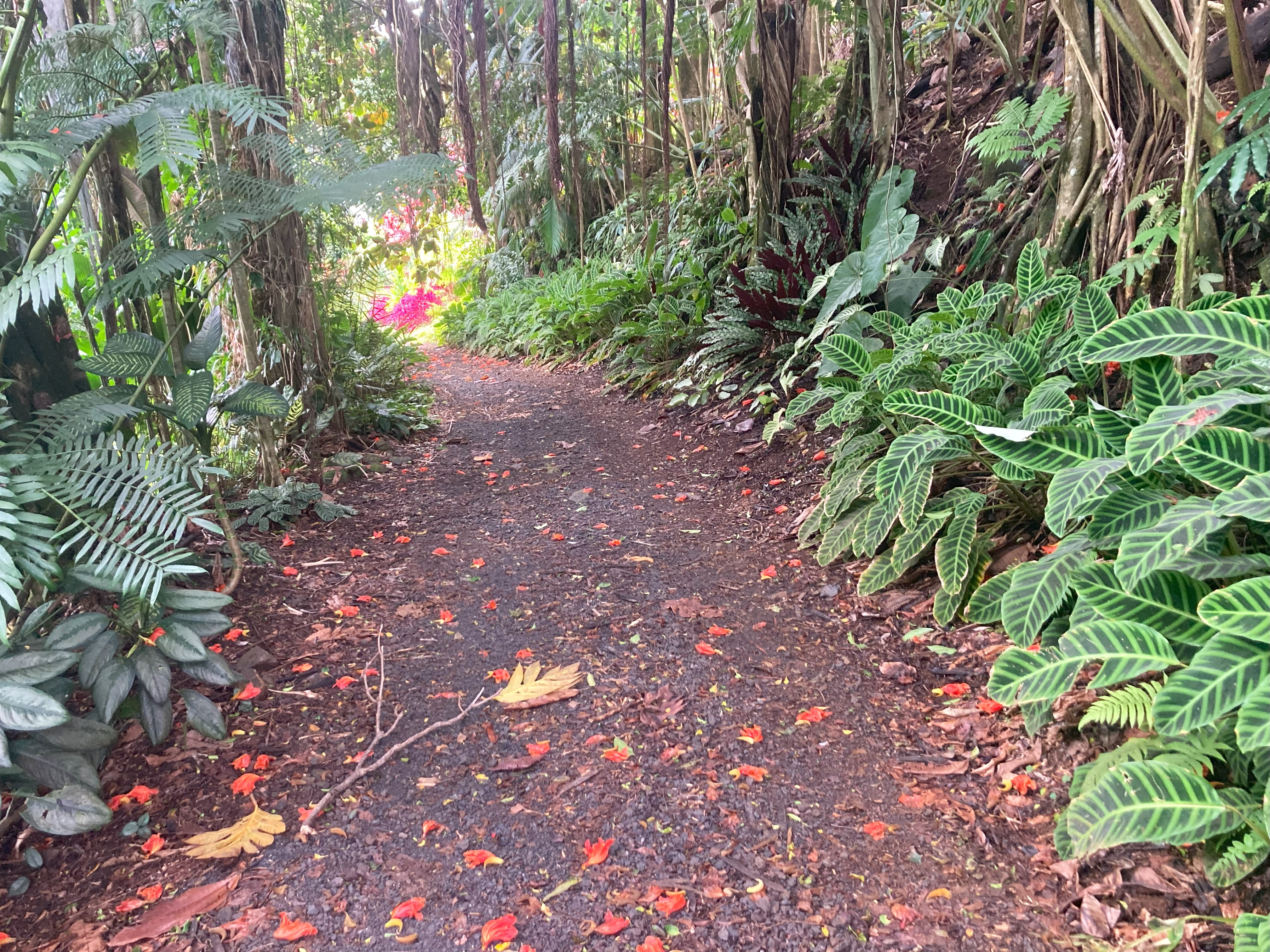Invasive Plants in Paradise
Contact
University of Arkansas System Division of Agriculture
Cooperative Extension Service
2301 S. University Ave.
Little Rock, AR 72204

Invasive Plants in Paradise
Flying into the airport in Honolulu, you are asked to fill out the agricultural form declaring you have no potentially harmful contraband that will upset the natural balance of the islands. Even the flight attendant says not to worry much about it because nobody ever checks these forms. The implication is that that ship has already sailed. The isolated Hawaiian Islands are like a terrarium; plants and animals growing in a sealed bottle. Once an organism arrives it will more than likely flourish somewhere in the mild climate that provides an endless array of warm to cool, wet to dry microclimates.
It is estimated there are about 1,400 native plant species in Hawaii, with most of these found nowhere else in the world. This is a surprisingly low number considering the tropical climate. The small number reflects the isolation and young age of the islands. Brazil has almost 50,000 species. Arkansas has about 2,700 species but only about 140 of these are endemic.
The original Polynesian travelers introduced a couple dozen plant species, but since about 1800, when the “Sandwich Islands” were first put on the map by Captain Cook’s crew, the introduction of new plants has gone wild. Captain Cook noted that the native population grew sugar cane, but it was not until the 1850s that the first fleeting attempts at large-scale commercial production were made. To provide needed labor, 50,000 Chinese workers were brought to the islands between 1852 and sometime in the 1880s. Next came the Portuguese from the Azores off of North Africa, and then the Japanese, Koreans and Filipinos.
The native Polynesian population had been decimated by disease, so the sugar cane plantations that flourished after some mid-century legalistic shenanigans needed laborers. But plantation owners were wary of having too many workers from one region lest they lose control in labor disputes. C&H Sugar, a staple on every grocery shelf in America, stands for California and Hawaii Sugar Company. It was one of the largest of these old-style plantations that, while not technically operating with slave labor, skated close to the line. The passage of the 1875 Reciprocity Treaty (eliminating sugar tariffs from Hawaii) and the overthrow of the Hawaiian Monarchy in 1883 have the fingerprints of rich American capitalists all over these pivotal events in Hawaiian history.
About 40 percent of the various ethnic workers went back home but the rest remained to make Hawaii the multicultural place it is today. Each ethnic group brought with them their own culture, their own foods and the plants they needed to successfully reestablish in a new land. Pineapple arrived in Hawaii as a commercial crop in 1886 but it wasn’t until James Dole planted the first 60-acre field in 1900 that the crop really took off.
Looking at charts showing production levels for sugar and pineapple, there is a rapid increase from zero to high levels, but then by the 1970s, both major crops began to show declines. Hawaii became a state in 1959 and the stranglehold of the Big Five sugar companies was finally broken. Seeing the writing on the wall, they began to divest land holdings and, in some cases, began to build resort hotels. Pineapple production ended in Hawaii in 2009 with the last sugar produced in Maui in 2016. Beginning in 1960 the number of overnight stays in Hawaiian hotels went from just a few thousand to almost 7 million in 20 years. Tourism was the new economic engine for the economy and the flood of new plants being introduced to the terrarium we call Hawaii increased exponentially.
Hawaii does not have an official list of plants they have singled out for eradication. Instead, they list plants that are being studied to see how much damage they are doing. The Australian tree fern is on this list because it presumably grows in the same kind of environment as the Hawaiian tree fern, but the invasive 40-foot-tall fern is twice as tall and can shade out the native fern. When I was there, the African tulip tree, the Brazilian monkeypod trees, the Cook Island pine (Araucaria), banyans of all sorts, scheffleras and countless species of palms gave the place the tropical feel we expect in paradise, but none of these are native.
I must confess a degree of ambivalence about the invasive plant issue. Nature abhors a vacuum. In places like Hawaii where thousands of acres of sugarcane fields have suddenly become classic “old field ecosystems,” the engine that drives the environment will fill that void. It will be filled by the fastest growing and most adaptable species, not by those plants that hold an historic citizenship to this particular piece of ground. In some ways it seems almost un-American to oppose those that work hard and flourish in a disturbed landscape.
